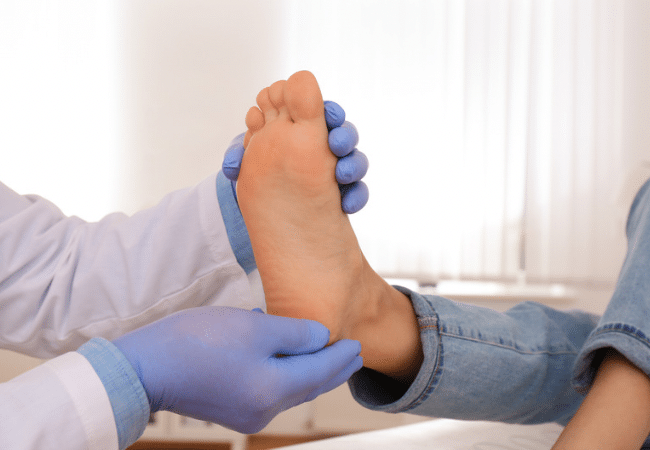Complications of T1D: Foot problems

It can be easy to take our feet for granted – they take us everywhere without asking for much attention. But when you’re living with type 1 diabetes (T1D), your feet can need a little extra care. Why? Because T1D complications can sometimes lead to reduced blood flow and sensation in your feet. This means small wounds or cuts might sneak by unnoticed.
Over 4400 Australians have a diabetes-related amputation each year (including both type 1 and type 2 diabetes), but 85% of those amputations are preventable, according to the Australian Government.
By making daily foot care part of your routine and staying on top of your diabetes management, you can make sure your feet are getting the best care, and reduce your risk of complications.
Causes of foot problems
People with T1D are at a higher risk of foot problems because of two things:
- decreased blood flow
- nerve damage (neuropathy).
These two factors can cause a loss of sensation in your feet, making it difficult to notice injuries or changes in your feet. Poor circulation also slows the healing process, increasing your risk of ulcers and infections.
Symptoms to look out for
Checking your feet regularly – ideally, a quick once-over on a daily basis – can help you catch early signs of trouble. Look out for:
- cuts, cracks or blisters
- pain or tingling
- numbness
- swelling
- wounds that don’t heal
- redness
- hot or cold feet, or one foot feeling warmer than the other
- lack of sweat
- hard skin.
You can also take this two-minute online check at Foot Forward to understand how healthy your feet are right now.
If you notice any changes in the shape or colour of your feet, or if one or both of your feet become red, hot, and swollen, get them checked by your GP or healthcare team.
Checks to get done
Annual foot exams are an important part of your healthcare if you’re living with T1D. During these check-ups, your doctor or podiatrist will:
- assess the condition of your feet
- test sensation
- check blood circulation by feeling your pulse.
If you notice any problems between these appointments, try to keep the weight off your foot and seek medical advice as soon as possible.
Treatments for foot problems
If you develop a foot problem, your doctor or podiatrist will advise on the best treatment for you. This could range from some basic wound care and/or medication, through to hospitalisation for more severe cases.
Seeking treatment at the first sign of any problems is the key to preventing serious complications like infections or amputations.
Reducing your risk of foot problems
Daily foot care is your first line of defence in reducing your risk of complications. Here are some tips:
- Keep your feet clean and dry to prevent infections.
- Wear socks and well-fitting shoes to avoid cuts and injuries.
- Moisturise your feet daily but avoid areas between the toes.
- Avoid walking barefoot, especially in extreme temperatures.
Managing your blood glucose levels, cholesterol, and blood pressure, staying active, and eating a healthy diet also play vital roles in maintaining foot health.
Where to go for more support
If you experience any symptoms of foot problems, contact your GP, healthcare team, or podiatrist. They can help you to manage your condition and hopefully prevent further damage.
